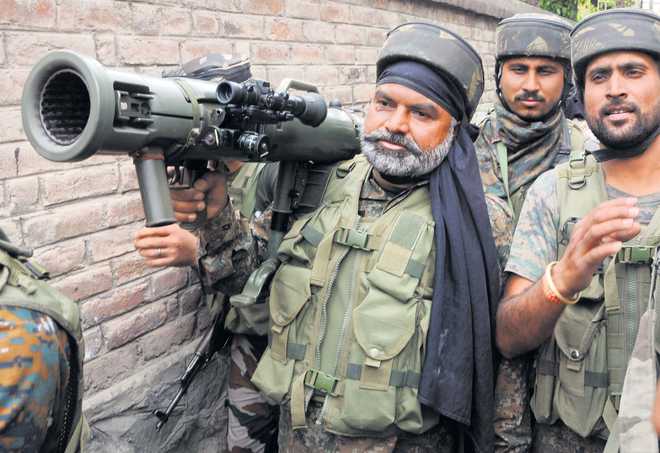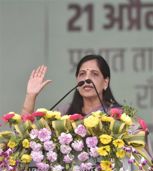
Air Marshal Narayan Menon (retd)
THERE have been media reports about the Indian military reorganising itself into integrated ‘theatre commands’ as opposed to the current system of ‘individual service regional commands’. The trigger for this proposed change could be the Chinese military creating five theatre commands, replacing the earlier seven ‘military regions’ in 2016 as part of the military reform that began in 2015.
The USA was the first nation to adopt the theatre command concept as part of a policy that encompassed the entire globe. These ‘unified combat commands’ are organised either on geographical basis with a defined mission in a specific ‘area of responsibility’ somewhere on the globe or on a ‘functional’ basis. The USA has six geographical combat commands and four functional commands comprising cyber command, special operations command, strategic command and transportation command. Each combat command is fully equipped with necessary resources of land forces, air assets, naval vessels and Marine Corps elements. They have integral C4ISR (command, control, communications, computers, intelligence, surveillance and reconnaissance) capabilities and can seek assistance from any of the functional commands when required. They can conduct military operations independently. Each combat command has one commander - he or she could be from any service - who reports directly to the President of the USA through the Defence Secretary.
China has successfully pursued a long-term comprehensive transformation of its military forces to improve its capabilities in power projection, anti-access and area denial. China has laid down a time-bound three-step developmental strategy in modernising its national defence:
1. Lay a solid foundation by 2010.
2. Make major progress by 2020.
3. Achieve strategic goal of building ‘informatised’ (net-centric warfare enabled) armed forces capable of winning wars by 2050.
The change to theatre commands is part of this long-term policy. But why did China wait till 2016 to enact this change? Analysis would reveal that China waited till its military arsenal and defence production capability reached self-sufficiency. China is not dependent on any other country for its military requirement. In fact, it is exporting high-end military products to many Asian and African nations. The General Secretary of the Communist Party of China exercises complete control over the Chinese military through the Central Military Commission of the CPC.
Some similarities need to be noted between the USA and China. The USA spends $620 billion (3.5 per cent of its GDP) on the military while China’s military expenditure is $220 billion (2.3 per cent of its GDP). The actual figures for China are thought to be higher, with military expenditure being hidden under different civilian heads.
India is in a completely different and subordinate class. India spends only about $ 60 billion on defence, which is less than 2 per cent of its GDP. Our military has shortages in personnel, equipment and firepower. The Army needs artillery guns and reliable rifles for its infantry. The Navy requires more submarines as replacements for its ageing fleet. The IAF is woefully short of fighter aircraft. We should have at least 45 frontline squadrons, but the current strength is around 30 squadrons. War waging reserves (WWR) are running low and we need more aircrew.
Despite its best efforts, the DRDO has been unable to meet weapon requirements of the Indian military. We import 75 per cent of our war weaponry and energy needs. And in the current environment of threatened sanctions, inflow of weaponry and energy seems uncertain. Our military chain of command is fuzzy. The President who is the Supreme Commander has only ceremonial functions. Civilians without domain knowledge rule the roost and the military has to accept decisions in a process in which they are denied a voice.
It is into this somewhat confusing scenario that we want to experiment by introducing a new concept of theatre command. By itself, the concept of India as a single theatre with one theatre commander is good. That theatre command is the way forward is a given, but we have to be careful. Till our military industrial complex is more self-sufficient and our dependence on foreign weapon imports is drastically reduced, we have to tread cautiously.
But a beginning can be made. Space, cyber and C4ISR could be the functional commands where the three services are integrated. The Integrated Defence Staff should be the focal point for threat assessment, budget allocation and procurement. With the experience gained and when the situation is more favourable, India could move to form theatre commands.
A major advantage of air power is its flexibility to relocate to meet emergent threats. If theatre commands are created within the existing scenario, this advantage would be sharply reduced. A force, already short of platforms, would have to be parceled out among the theatres and bureaucratic wrangles are likely to delay inter-theatre moves with detrimental effects on employment of air power.
The priority for the Indian military today is to make up its deficiencies and eliminate its weaknesses within the existing structure. Military-civil decision-making needs to be refined. Without such corrections, structural changes, like creating theatre commands, would be counter-productive negatively affecting our national interests.



























